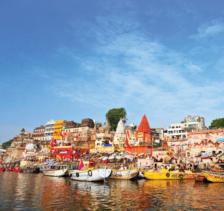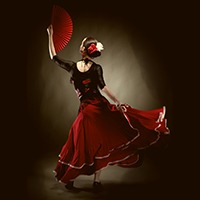
Ms M. Das had been brought up in Bowbazar, a bustling area of Kolkata, erstwhile Calcutta. So, life brought her way quite a few surprises when she married an officer from the Indian Airforce, who hailed from Nirakarpur, a ...
Ms M. Das had been brought up in Bowbazar, a bustling area of Kolkata, erstwhile Calcutta. So, life brought her way quite a few surprises when she married an officer from the Indian Airforce, who hailed from Nirakarpur, a remote village in Khardah district.
Her sister accompanied her on her first trip to her husband’s ancestral home in Nirakarpur. She had been advised by her mother-in-law to cover her head till the nose and she had obediently done so. After getting down from the bus, both the sisters boarded a rickshaw which was entirely covered with a blanket, so that no passer-by could see them. The seemingly never-ending ride finally ended when the blanket was suddenly removed. One of her sisters-in-law, who came to receive them, helped her get down from the rickshaw. “It was extremely difficult for me to move an inch with that ghunghat (head cover) and I could not see anyone. That’s how I met my extended in-laws. And it was there that I first tasted ’Chalta’ (Elephant apple), a sapling of which, brought from there aeons ago, has grown into a tree which still thrives in my garden, reminding me of that time.
After 15 days, Ms Das set off with her husband for her very first plane journey. They were to go to Jorhat from Dumdum airport. She was rather excited to go to an unknown place with a not-so-known person. When they landed in Jorhat, she found that her husband’s scooter was parked at the airport. Much to her surprise, her husband tied all their belongings to the scooter, and with her as the pillion rider, started for their home.
Her husband took her first to a dairy farm, home to around 45 cows, each in a separate shed, that were well-lit and properly maintained. He started calling them by their names and introduced her to them. The cows had unique and elaborate names like 'Aradhana', 'Kadambini', 'Mousumi' and so on. Ms Das was shocked and bewildered. She could not imagine why she was standing in a dairy farm getting introduced to cows when her parents had said that her husband was an Airforce pilot!
Soon, however, she met some airmen, who saluted them. Her husband in turn asked whether the cows had been given their injections on time, during his absence. He even injected one of the cows leaving Ms Das completely flummoxed and very homesick as she remembered her very different life in her Bowbazar home. After spending some time there, they went to a house owned by some of her husband’s colleagues, who had specially reserved a room for them.
She later came to know that the dairy farm had been set up to provide nourishment to the airmen’s children. Her husband had been given the responsibility of looking after the farm, as he had a PhD in Agriculture and he diligently managed all the responsibilities of his airfield.
Ms Das still cherishes the eventful early years of her married life. The bike, which had taken her from the airport to the farm, now stands in her garden as a memento of her husband.
Want to share your experience? Please mail your story to writetous@supportelders.com with your name

Our member, Ms G. Mitra Ghosh, writes about an amazing incident that happened during her trip to Varanasi, 25 years ago.
About 25 years back, we visited one of the holiest and oldest cities of India, Varanasi. As it is ...
Our member, Ms G. Mitra Ghosh, writes about an amazing incident that happened during her trip to Varanasi, 25 years ago.
About 25 years back, we visited one of the holiest and oldest cities of India, Varanasi. As it is mainly a temple city, our main purpose was to visit the different temples.
After visiting the Kashi Vishwanath temple and some of the other temples, we went to the Annapurna temple, one of the most beautiful temples in Varanasi. The deity here is named Annapurna Devi, who is said to be an incarnation of Goddess Parvati and is worshipped as the provider of food. The gorgeous idol was seated on a silver throne.
I, like the other devotees, offered puja and was extremely happy and satisfied with the way I got a good darshan of Goddess Annapurna. Then, suddenly, a niggling question began to bother me—'I have offered puja with full devotion and purity, but how could I know that the Goddess had accepted my puja?’ Almost immediately, a thought came to me—‘If some unknown person offers me something in the temple, I will think that the Goddess has accepted my offerings.’ I decided to wait there. I waited for quite some time, but nothing happened. Disappointed, I decided to leave.
However, the moment I turned to leave, I felt a touch on my shoulder. I turned around to find a very fair, wide-eyed old lady smiling at me. She took out a guava from her silk bag and said, “I am fasting the whole day today. I want you to have this guava.” I told her, “But I did not fast today, how can I take it?” She said, “So what? You can still have it.” She asked my name and told me that she lived in Varanasi. When I tried to bend and touch her feet, she said that I should not touch her feet inside the temple. Then, she went off with a smile and almost immediately got lost in the crowd. I looked and looked for her, but could not find her in the crowd. With the belief that the guava was a god-sent gift, I kept it with me for quite a long time. I felt at peace that my offering had been accepted by the Goddess.
Many years have passed and though I have been to many other places, this incident is still fresh in my mind and whenever I recall it, I feel overwhelmed.
Want to share your experience? Please mail your story to writetous@supportelders.com with your name

Born in the pre-independence era, I spent an exciting childhood in Naogaon of Rajshahi district of undivided Bengal. It was by the side of River Yamuna, a tributary of the Ganges, and a developed city with schools and colleges. ...
Born in the pre-independence era, I spent an exciting childhood in Naogaon of Rajshahi district of undivided Bengal. It was by the side of River Yamuna, a tributary of the Ganges, and a developed city with schools and colleges. My maternal uncle’s house was just beside the river. Every monsoon, the overflowing rivers used to inundate the houses and as children we would enjoy it from our first-floor balcony, especially the fish swimming around the courtyard. Another attraction was the big country boats sailed by the boatmen and the melodious tunes of their songs.
In our house, the vegetarian and non-vegetarian kitchens were separated and those were always outside the main building. Electricity was out of the question and so all the children had to study under the light of the hurricane lamp. That was also a lot of fun, as we used to sit in a circle and read aloud together. Sleeping in the same bed, bathing in the river together—all of this forged a strong beyond bond between us. Sometimes we were so engrossed in bathing that we used to forget the time and get late. As a strict rule, the main door closed at a particular time and if we got late, we had to climb the boundary wall and enter through the windows and for that we were strictly punished by the elders.
I remember an incident when I was almost kidnapped by a kabuliwala, as we used to call them at the time. As evident, he hailed from Kabul and I was very fascinated by his large black bag full of dates and the stories of his country. We always wanted to visit his country, so one day he took us with him—a boy from our neighbourhood and me on his bicycle, probably with the bait of taking us to his country. We were very young to understand what was happening and accompanied him. While walking on the railway track, a few village boys noticed us and came shouting and running, and we were saved by the timely intervention.
Then came World War II when we had to shift to our village home, which had been empty for quite a long time. However, it was an interesting house with a secret tunnel that connected to the river. It was told that it was the escape route for the soldiers during the Battle of Plassey.
Another time of year that was very dear to me was Durga Puja. The fields full of flowers, especially the kash phool (white feathery flowers), the smell of naarkel naru, a Bengali delicacy made with coconut and jaggery, just after Durga Puja…everything is fresh in my mind.
I still miss the simple but lovely childhood days.
Want to share your experience? Please mail your story to writetous@supportelders.com with your name

I got a request to pen down a few lines about my favourite teachers. The years flew back and the memories came floating, riding a rainbow. All Loreto Girls’ students of my age (I am 75 years now) can remember ...
I got a request to pen down a few lines about my favourite teachers. The years flew back and the memories came floating, riding a rainbow. All Loreto Girls’ students of my age (I am 75 years now) can remember some very dear teachers we had. Their love and sincerity in shaping our young body and minds, nurturing us into what we are today. I have had a few such dear mentors like Mother Kevin. Mother Carmel, Miss O’Conner, Miss Musa, Miss Sarkar and I can go on and never stop at one. Discipline and honesty were our motto. I can still hold high the banner of Loreto. Education was not about books but the making of a complete self. I will wish all the generations to come to inherit such an education.
I have a sweet memory of Mother Carmel that l'd like to mention. She was quite finicky about diction. Once I had entered her office saying, “Can I come in, Mother?” She beckoned me and said, “My dear, you can always come in, but you should say 'May I and not can'.” Any corrections in class were explained with a hand on my shoulder. These are some sweet memories of my schooldays.
Want to share your experience? Please mail your story to writetous@supportelders.com with your name

Our member Ms S. Chakrabarti is an avid traveller. She reminisces one of her favourite dance form of Spain ‘Flamenco’ and shares a brief description of its origin. Spain, formally the Kingdom of Spain is a Democratic Monarchy located ...
Our member Ms S. Chakrabarti is an avid traveller. She reminisces one of her
favourite dance form of Spain ‘Flamenco’ and shares a brief description of its origin.
Spain, formally the Kingdom of Spain is a Democratic Monarchy located in
the southwest side covering approximately 85% of the total area of Europe. It has
been divided into 17 administrative departments all under the autonomous body of
Spain. These are also called historical zones or in their language ‘Comunidad
autonoma’.
Seville, Andalusian Spanish is the capital and largest city of the Spanish
autonomous community of Andalusia and the province of Seville. One of the most
important characteristics of Seville is Flamenco dance. Spain is famous for being the
Flamenco capital of the world.
The participants of this dance form sing and dance themselves . Flamenco singers
can easily convey their emotions to the audience through their drama and
passion. These songs are basically folk music and like many other country's folk
music, it has a passionate expression of their love and grief.
Flamenco musicians known as ‘Cantor’ are mainly male artist, the girls are
called ‘Cantaora’ and the dancers are called the ‘Bailor’. The song and dance are
presented mainly with the jingle of guitar and the guitarists are called ‘Tacor’. Every
stomp of the dancer’s feet, strum of the musician’s guitar, and clap of the singer’s
hands make it a breathtaking performance that regales the audience . Earlier, the
dance was performed with songs and making sound on wooden platforms with
the pacy beats of clapping hands. At times clapping is replaced by an instrument called ‘Castanets’. The tapping of feet reminds one of “Kathak”, the Indian dance
form that also involves hand movements and extensive footwork. The traditional
costume of wearing a long skirt with frills and full sleeve top with sometimes a hat
have changed a bit with time.. Flamenco dance is said to be originated even before
the birth of Muhammad in 570 AD. There are many versions of the origin of the
dance of which one attributes it to a tribe named ‘Baijantais’ whose chanting in the
Church is very similar to the tune of Flamenco songs, while another traces its origin
to Spain. Another version is that the gypsies from Romania travelled through Africa
and brought these songs to Spain. The Romanian gypsies who comprised of
musicians , dancers, traders and metal workers are nomadic groups who used to
travel from one country to another., As a result of that, the dance reflects a mixture
of several culture. . It is even said that the stomping of feet is acquired from the
Indian culture.
“Dibe r nibe milabe milibe jabena phire
Ei bharater mahamanaber sagartire”
“Give and take, mingle and get assimilated and none will depart empty handed from the
great country called India.”
Want to share your experience? Please mail your story to writetous@supportelders.com with your name

